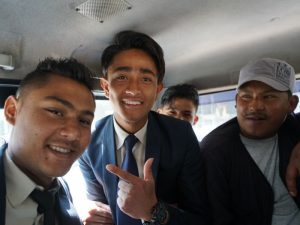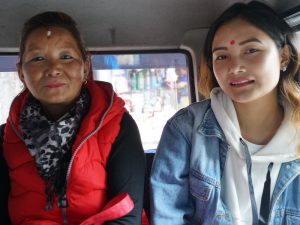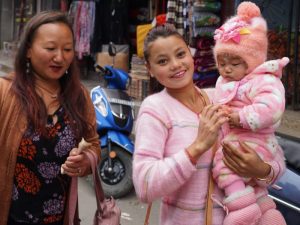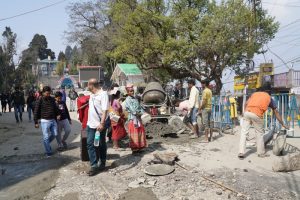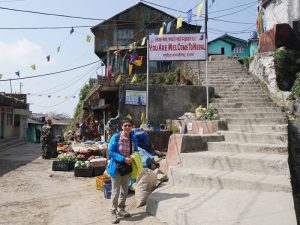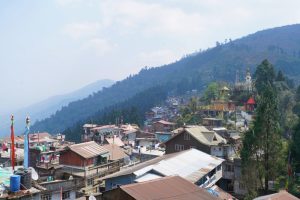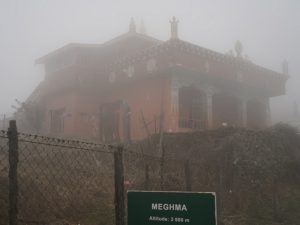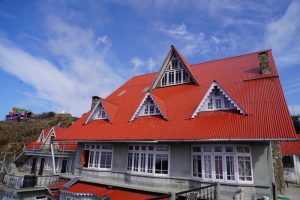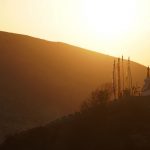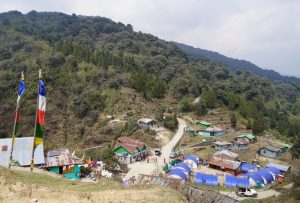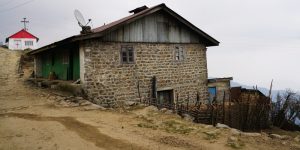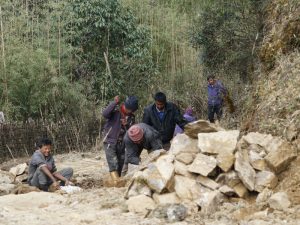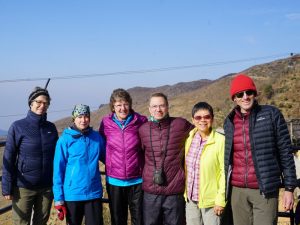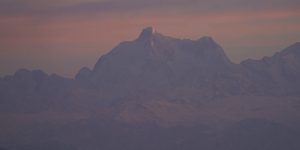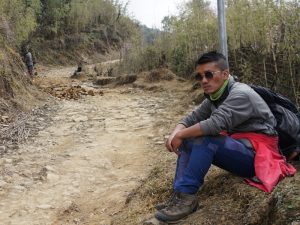March 14 – 19: Wanderlust in Darjeeling
Trip Plan
I had ten free days between the end of the rail tour and the start of the Assam trip. My initial plan was to spend my time in Darjeeling and Sikkim before arriving in Guwahati on March 23. As usual, things seldom turn out as planned. Time for adventure!
March 14 Thursday: Kolkata – Siliguri
My train would depart from Kolkata Howarh Station at 2:15 pm. I took a taxi to the station around 1 pm and spent about an hour in the station which has changed for the better since my first visit in 1978. It is tidy, orderly and clean by Indian standards with the odour of urine in the waiting hall.
But the information on train departures is confusing. I could not find my train (12041 Shatabdi Express) on the information board. I got confused and worried when someone said my train would be leaving at the adjacent station. I rushed to the enquiry counter where the officer told me my train would be leaving at Platform 10. I went there but the train was heading somewhere else. What’s going on? It was close to 2 pm now.
Then I noticed the train arriving on Platform 11 had images of tea plantations on its carriages though it had a different train number. I asked passengers on the platform and was relieved to know it was the right train.
I got on board and settled down. The guy sitting next to me is a young man of 29 who is a Brahman (the highest ranking of the four varnas or social classes in Hindu India). He runs a plywood business. We talked on and off for four hours covering a wide range of topics including his upbringing, his wedding in September, his fiancé who is also a Brahman and lawyer, the family structure and caste system in India. He also expressed his frustration about Pakistan and the situation in Kashmir. I told him about Hong Kong and suggested him visit my fascinating city one day.
I asked him for suggestions on hotel to stay in NJP or Siliguri. He recommended me stay in Siliguri and take a shared jeep to Darjeeling the next day. I booked the hotel he recommended while on the train. He got off shortly after 7 pm.
Then the train was held up somehow and I did not arrive at the NJP station after 11 pm. It’s not too bad by Indian standard!
I paid R250 for a taxi to the hotel which is in the heart of Siliguri. It is a very basic hotel and I paid under R1,000 for one night. The young receptionist is nice trying to fix the fan but without success. The room and the toilet are filthy. It was late and I had no choice but stay. I did not touch the beddings and slept in my sleeping-bag lining. Anyway, I had a surprisingly good sleep.
March 15 Friday: Darjeeling
Darjeeling located in the Lesser Himalayas at an elevation of 2,042m and 600 km from Kolkata, is a city and a municipality in the state of West Bengal. It owes its fame to the British: the town started from the early 19th century when the British Raj set up a sanatorium and a military depot in the region. Later, they established extensive tea plantation and built the railway known as Darjeeling Himalayan Railway (DHR) which is now a World Heritage Site. Darjeeling is a popular tourist destination famous for its tea and views of Kangchenjunga, the world’s third-highest mountain. It still has several British-style public schools which attract pupils from all over India and a few neighbouring countries.
I got up early, took a tuk tuk to a bus stand by the road with dozens of jeeps plying the route to Darjeeling. Each jeep takes ten passengers (two seating next to the driver, four in the middle row and four in two side rows at the back). The fare to Darjeeling is R150 each. I got on one jeep that already had five passengers. The driver put me at the left back row. I should have got off and taken another jeep offering me a seat in the front or middle row.
While the six passengers on the front two rows did not get off till Darjeeling, over ten short-distance passengers got on and off. I was squashed and felt most uncomfortable. But I met and talked with three engineers, three college students, a young girl with her mom and her baby daughter and finally a pretty girl with her mom. Nice to travel like a local!
I had booked Vajar Kunj Homestay near the Dali Monastery. I forgot to give the address to the driver so that he could tell me where to get off. At the end, I got off near a petrol station and called Bishu, the owner of the homestay. It was after 11:30 am. I was surprised when Bishu turned up a few minutes. By chance, I was less than 100m from his cyber-café shop. I left my suitcase in his shop and spent four hours exploring the sprawling city.
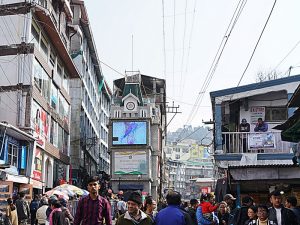 I told Bishu my plan to visit Sikkim. He suggested me go to the office for foreigner registration to seek permission first and pointed out a big blue building up the hill. The whole place is like a market place with street stalls and malls. The roads and alleys are narrow and busy.
I told Bishu my plan to visit Sikkim. He suggested me go to the office for foreigner registration to seek permission first and pointed out a big blue building up the hill. The whole place is like a market place with street stalls and malls. The roads and alleys are narrow and busy.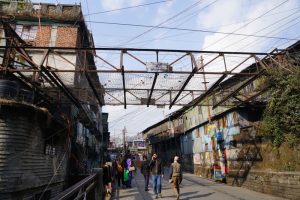
I walked uphill and found the office without problem. Unfortunately, Chinese are not allowed to visit Sikkim though I am holding a HKSAR passport. This happened once when I was in Ladakh.
What should I do with the next eight days? These days, I take things easy. I could spend a few days hiking and go to Guwahati a few days earlier.
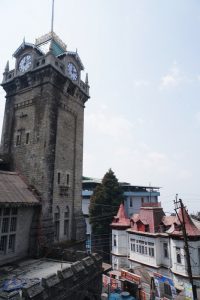 I wandered aimlessly around and climbed more steep slopes and steps to a hilltop hoping to catch my first view of Kanchenjunga. I found a guesthouse with a nice balcony with plants. I could vaguely see the mountain. I sat down and had a ginger fried rice which was most delicious. The staff told me the owner of the guesthouse is a Nepalese who had returned from Hong Kong. I ordered a cup of Darjeeling tea. It is smooth with a fresh light aroma. Excellent!
I wandered aimlessly around and climbed more steep slopes and steps to a hilltop hoping to catch my first view of Kanchenjunga. I found a guesthouse with a nice balcony with plants. I could vaguely see the mountain. I sat down and had a ginger fried rice which was most delicious. The staff told me the owner of the guesthouse is a Nepalese who had returned from Hong Kong. I ordered a cup of Darjeeling tea. It is smooth with a fresh light aroma. Excellent!
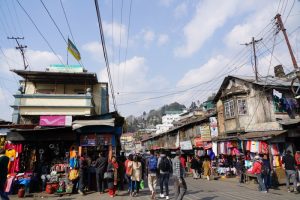 I then descended onto the famous Chowrasta (crossroads), a square on the top of the ridge below the Observatory Hill. I thought of strolling around the Mall and the Observatory Hill and had a cup of tea at the famed Windamere Hotel. But my priority now was to look for a trek. Anyway, the Chowrasta is a messy construction site!
I then descended onto the famous Chowrasta (crossroads), a square on the top of the ridge below the Observatory Hill. I thought of strolling around the Mall and the Observatory Hill and had a cup of tea at the famed Windamere Hotel. But my priority now was to look for a trek. Anyway, the Chowrasta is a messy construction site!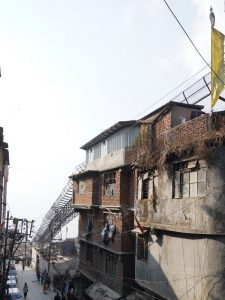
The most popular trek in the region is a 5 to 7 day – trek in the Singalila National Park located at the north-western part of Darjeeling bordering Nepal with an area of 78.6 km2. The Singalila Ridge trek is the oldest trek of India. The trek starting at Maneybhanjyang at 2,134m leads to Sandakphu, the highest point in Bengal at 3,636m. A trekker takes 2-3 days to cover 32 km to reach the peak which is a vantage point to see four of the world’s five highest peaks – Everest, Kanchenjunga, Makalu and Lhotse – in a continuous snow-clad arc.
Given my recent knee and hip problems, I decided to play safe. A leisure hike with nice views would be more suitable. I looked at a couple of trekking companies and finally found Trek Mate whose owner Tsewang suggested a 3D-2N trek with transfer, a guide and full board at a lodge in Tumling (2970m) for R13,000. It’s not cheap. But as a solo trekker, I had no choice. Tsewang advised me not to waste time and money to go to Tiger Hill, a favourite spot 11 km south of Darjeeling, to watch sunrise as I would get better views at Tumling.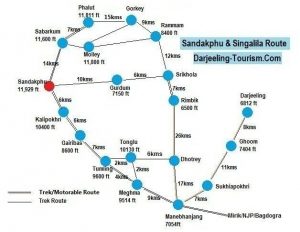
I returned to the homestay on a shared taxi (R10) which is old with broken chairs. It was again packed with ten passengers. I was met warmly by Bishu’s wife Bobby. I had a simple but nice and clean room. The electric blanket kept me warm. I had excellent sleep.
At 8 pm, I joined three other guests (a Mainland Chinese couple from the UK and a German lady) for dinner in the kitchen/dining room. The German lady, a train enthusiast, arrived today with the DHR after taking an overnight train from Kolkata to NJP. Had I taken the DHR, I would probably have met her on the train! She would only spend a night in Darjeeling before heading back to NJP by jeep in the afternoon and take the overnight train back to Kolkata. Crazy!
March 16: Darjeeling
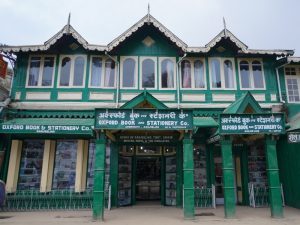 I have romantics image of Darjeeling as a picturesque hill station with colonial buildings, tea plantations and snow-cladded Kanchenjunga as the backdrop. After spending a full day on foot in Darjeeling, my infatuation is shattered.
I have romantics image of Darjeeling as a picturesque hill station with colonial buildings, tea plantations and snow-cladded Kanchenjunga as the backdrop. After spending a full day on foot in Darjeeling, my infatuation is shattered.
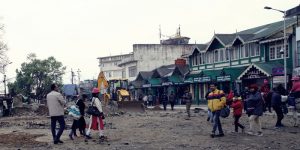 Unplanned and sprawling developments have ruined the once peaceful and beautiful hill station. The town squatting precariously on the hillside has three main thoroughfares namely the Hill Cart Road, Laden Road and the Mall. Today, the narrow roads are choked with vehicles. Pollution from noise, garbage, lack of proper sewage system and diesel fuel is horrifying. Darjeeling today though still looks picturesque from a distance, is ruined as a result of lack of maintenance, adequate infrastructural development and overcrowding.
Unplanned and sprawling developments have ruined the once peaceful and beautiful hill station. The town squatting precariously on the hillside has three main thoroughfares namely the Hill Cart Road, Laden Road and the Mall. Today, the narrow roads are choked with vehicles. Pollution from noise, garbage, lack of proper sewage system and diesel fuel is horrifying. Darjeeling today though still looks picturesque from a distance, is ruined as a result of lack of maintenance, adequate infrastructural development and overcrowding.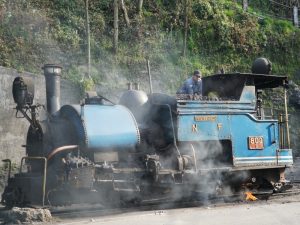
My original plan was to take the 10 am nostalgic steam train (toy train) to Ghum. It costs R1,405 while one pays about R800 for the diesel DHR. As the 10 am train was full, I decided to take the last steam train at 4 pm so that I could spend a few days exploring the town and watch sunset from the train.
When I saw only two people queue at the DHR ticket reservation office, I rushed to join the queue to get my ticket to Guwahati, Assam on March 20.
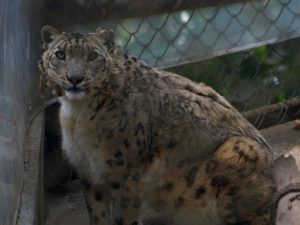 The reservation system is archaic and inefficient. I had to get a form from one counter and queued in another counter. I waited for over 30 minutes for my turn. I told the officer that I wanted to take Train 12424 DBRT Rajdhani departing at 1:30 pm on March 20. He looked at my passport and input my data in the reservation system. But I must provide a photocopy of my passport and Indian Visa before noon. I asked for an A/C Chair but he gave me a ticket for a lower bunk for R1,340.
The reservation system is archaic and inefficient. I had to get a form from one counter and queued in another counter. I waited for over 30 minutes for my turn. I told the officer that I wanted to take Train 12424 DBRT Rajdhani departing at 1:30 pm on March 20. He looked at my passport and input my data in the reservation system. But I must provide a photocopy of my passport and Indian Visa before noon. I asked for an A/C Chair but he gave me a ticket for a lower bunk for R1,340.
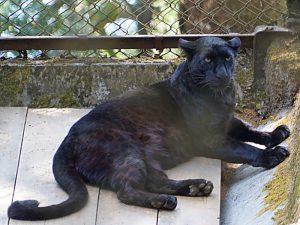 I finally had my ticket issued before 11 am. It’s the first time I bought a train ticket myself instead of through an agent. What an experience with the Indian Rail!
I finally had my ticket issued before 11 am. It’s the first time I bought a train ticket myself instead of through an agent. What an experience with the Indian Rail!
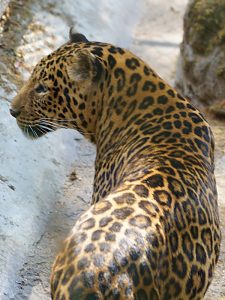 I had about four hours to explore the city before taking the toy train. Tsewang has recommended a visit to the Zoological Park (about 2km from Chowrasta). I walked to the zoo so that I could feel the pulse of the town, see the landscape and developments, and meet the people.
I had about four hours to explore the city before taking the toy train. Tsewang has recommended a visit to the Zoological Park (about 2km from Chowrasta). I walked to the zoo so that I could feel the pulse of the town, see the landscape and developments, and meet the people.
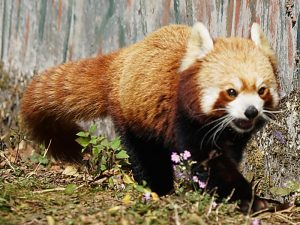 It was after midday when I arrived in the zoo. It is not big but tidy and clean. I saw snow leopard, clouded leopard, black panther, Tibetan wolf, black bear and red panda. Unfortunately, the Royal Bengal tiger was lying down and I only looked it in its eyes for a split second when it raised its head.
It was after midday when I arrived in the zoo. It is not big but tidy and clean. I saw snow leopard, clouded leopard, black panther, Tibetan wolf, black bear and red panda. Unfortunately, the Royal Bengal tiger was lying down and I only looked it in its eyes for a split second when it raised its head.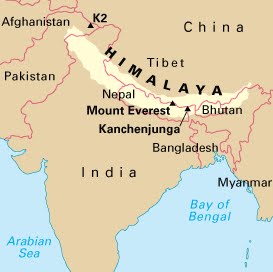
I spent some time in the Himalayan Mountaineering Institute in the Birch Hill. Established in November 1954 after the successful ascent of Mt. Everest by Sir Edmund Hillary (1911-2008) and Tenzing Norgay (1914-86) in 1953, it is informative with a good model of the Himalayan ranges. I now have better ideas of the topography of the whole region covering the Tibetan Plateau, India, Pakistan, Bhutan and Nepal.
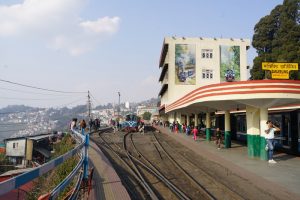 It was after 2 pm now. A short distance away is India’s first cable car connecting Darjeeling to Singla Bazaar in the Little Rangeet Valley. I was tired and dropped the idea of more sight-seeing. After passing by the Happy Valley Tea Estate, I took a shared taxi (R10) to the market. I then wandered through the market which sells both fresh produces, clothing and footwears. From the market, I walked over a kilometre to the train station.
It was after 2 pm now. A short distance away is India’s first cable car connecting Darjeeling to Singla Bazaar in the Little Rangeet Valley. I was tired and dropped the idea of more sight-seeing. After passing by the Happy Valley Tea Estate, I took a shared taxi (R10) to the market. I then wandered through the market which sells both fresh produces, clothing and footwears. From the market, I walked over a kilometre to the train station.
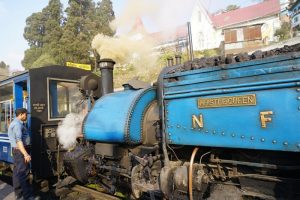 The DHR built between 1879 and 1881, is a 2-ft/610mm gauge railway that runs about 88 km between NJP and Darjeeling. It climbs from 100m to about 2200m using six zig zags and five loops to gain altitude.
The DHR built between 1879 and 1881, is a 2-ft/610mm gauge railway that runs about 88 km between NJP and Darjeeling. It climbs from 100m to about 2200m using six zig zags and five loops to gain altitude.
I watched the train station staff getting the steam train ready. It’s using coal with yellow and black smoke coming out. It looks polluted. The train with only two compartments was full. Unfortunately, the weather was not good. I do not enjoy the ride owing to the noise and smoke.
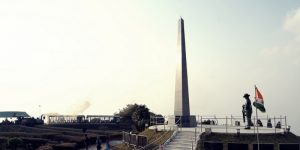 The train covers a short distance (about 10 km in total). We had our first stop at the famed Batasia Loop, when the antique and exotic steam locomotive negotiates a 360-degree loop at Batasia. Anyway, I did not see the postcard view of the train at the loop with Kanchenjunga.
The train covers a short distance (about 10 km in total). We had our first stop at the famed Batasia Loop, when the antique and exotic steam locomotive negotiates a 360-degree loop at Batasia. Anyway, I did not see the postcard view of the train at the loop with Kanchenjunga.
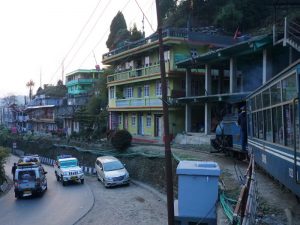 The second stop was at Ghum where we had 30 minutes to walk around and visit a museum. At one moment, three DHR trains heading to Darjeeling were all lined up at the station.
The second stop was at Ghum where we had 30 minutes to walk around and visit a museum. At one moment, three DHR trains heading to Darjeeling were all lined up at the station.
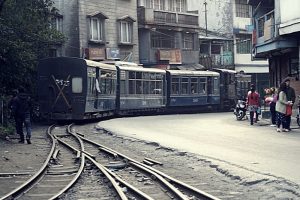 By the time we finished the two-hour ride, it was totally dark. I walked back to the homestay. At dinner, I met two ladies from Ukraine. They are Yoga teachers and frequent visitors to India. I asked them about Auroville which sounds mystical and spiritual. I am keen to spend a few days there on my next visit.
By the time we finished the two-hour ride, it was totally dark. I walked back to the homestay. At dinner, I met two ladies from Ukraine. They are Yoga teachers and frequent visitors to India. I asked them about Auroville which sounds mystical and spiritual. I am keen to spend a few days there on my next visit.
March 17-19: 3-day hike in Singalila National Park
Situated at the north-western part of Darjeeling, the Singalila National Park has an area of 78.6 km2. The Singalila Ridge trek starts at Maneybhanjyang (2,134m). A trekker takes two to three days to cover 32 km to reach Sandakphu (3,636m). These days, tourists can travel by jeep to Sandakphu as well. From Sandakphu, one can continue to hike to Phalut: the Sandakphu-Phalut trek is the oldest trek of India.
Day 1: Maneybhanjyang to Tumling (12 km)
Tsewang picked me up at 9 am. His staff dropped me and the guide off at Maneybhanjyang a border town between India and Nepal and starting point of the trek. All foreigners have to register with the Singalila Wildlife Office and visit the park with an approved nature guide.
My guide took me to a local eatery for momo (a kind of dumpling) and marsala tea. Most delicious! I am delighted to see how clean the kitchen and the utensils are.
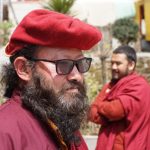 At 10:30 am, I took off with walking poles in hand. But the first 3km hike to Chitre (2,542m) with lots of steep steps is tough for persons with knee and hip problem. I met some pilgrims at the temple and passed by the monastery before reaching a stupa with many colourful prayer flags.
At 10:30 am, I took off with walking poles in hand. But the first 3km hike to Chitre (2,542m) with lots of steep steps is tough for persons with knee and hip problem. I met some pilgrims at the temple and passed by the monastery before reaching a stupa with many colourful prayer flags.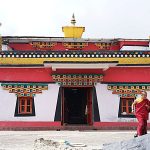
The next stage – a 3.5-km walk to Lamadhura (2,680m) – with steady and gradual incline without too many steep and uneven steps is easier. Sometimes, I was walking through meadows and grassland. After a while, I would pass through wooded land with birch, fir, pine or bamboo depending on the altitude. But the weather was not good for most of the day. It was cloudy and grey.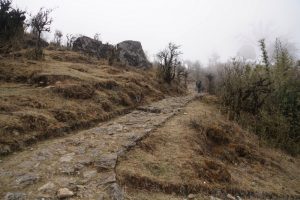
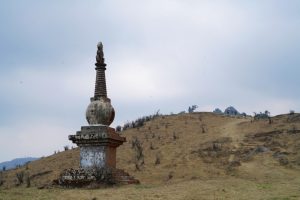 There was not much to see. The famed rhododendron forest at its full bloom would be a few weeks away. The landscape though dotted with a few stupas here and there, is nothing but ordinary. Anyway, I enjoyed walking leisurely in peace and soaking in the atmosphere.
There was not much to see. The famed rhododendron forest at its full bloom would be a few weeks away. The landscape though dotted with a few stupas here and there, is nothing but ordinary. Anyway, I enjoyed walking leisurely in peace and soaking in the atmosphere.
I walked slowly but steadily without stops for another 3 km before reaching Meghma (2,900m). The monastery was closed. We stopped for lunch. I had noodles with fresh cabbage.
I had done 9.5 km by now. Then, we followed a hiking trail mainly on a stony path on Nepalese soil all the way to Tumling (2,970m). The weather for the last 200m improved. I looked up and could see a few colourful lodges on the ridge. Shortly after 4 pm, I arrived at the Shikhar Lodge.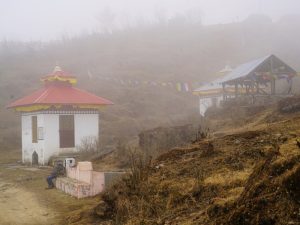
As the sky had cleared up, I took a walk after having a cup of afternoon tea. Anyway, it was too cloudy for sunset.
There are half a dozen lodges and guesthouses in Tumling. According to my guide, Shikhar Lodge with 19 rooms, offers the best food on the trek. I spent most of my time in the kitchen chatting with the lady in charge of the lodge and the chef. There were over 20 guests staying tonight. The kitchen team spent hours peeling potatoes and unions. Around 5 pm, the chef started preparing tandoori chicken, butter chicken marsala, nann, roti, grilled paneer and vegetables, potatoes etc.
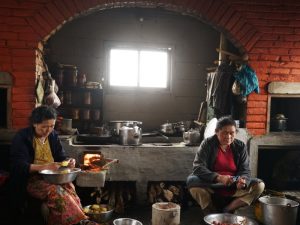 I had a wonderful time and was honoured when the chef invited me to sample all the food he prepared! I was half full when I had my butter chicken marsala with rice, salad, dal soup, fried vegetables for dinner. What a feast!
I had a wonderful time and was honoured when the chef invited me to sample all the food he prepared! I was half full when I had my butter chicken marsala with rice, salad, dal soup, fried vegetables for dinner. What a feast!
The owner of the lodge also gave me a hot water bottle to keep me warm. I had a wonderful sleep.
Day 2: Tumling – Gairi Bas- Tumling (14 km)
There was no spectacular sunrise as it was too cloudy. Anyway, I got up early. While the trekkers set off either for Kalepokhri (13km) or Sandakphu (20km), I had a leisure trek after a big breakfast with egg, porridge, roti etc.
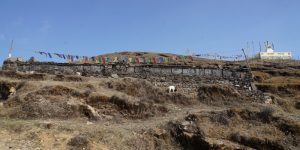 I set off with nothing except my camera: my guide offered to carry my light day pack. Our half-way destination was Gairi Bas (2,621m), a small village with a few hotels and guest houses on the Nepalese side and India’s SSB camp on the right side of the road.
I set off with nothing except my camera: my guide offered to carry my light day pack. Our half-way destination was Gairi Bas (2,621m), a small village with a few hotels and guest houses on the Nepalese side and India’s SSB camp on the right side of the road.
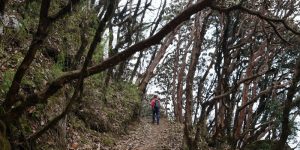
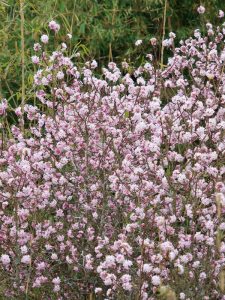 I walked through dense forest that is within the Indian territory. Unfortunately, the rhododendron was not in blossom and there was not much wildlife.
I walked through dense forest that is within the Indian territory. Unfortunately, the rhododendron was not in blossom and there was not much wildlife.
 By 11 am, we reached Gairi Bas (half-way point) where we stopped for lunch. As my stomach was still full, I only took a noodle soup.
By 11 am, we reached Gairi Bas (half-way point) where we stopped for lunch. As my stomach was still full, I only took a noodle soup.
After an hour’s rest, we took a trail on the Nepalese side to return to the lodge. The weather had improved with better visibility. I walked through the picturesque Jhaubari (2,800m) on the ridge. It is the largest village I have seen on this trek. I am surprised to find a pretty small church here. But it seems empty.
I was back in the hotel soon after 3 pm. I had tea and met half a dozen trekkers from Australia and Canada.
Several of them had ties with Darjeeling. Mick (an Australian doctor) was born in Assam. His wife Kris who is also a doctor, spent her first few years in Darjeeling. Margaret was born in Darjeeling. They came back for a class reunion in Darjeeling and went on a 7-day trek. They said they had the most awesome view of Mt Everest and Kanchenjunga from Sandakphu a couple days before. After listening to their experience, I decided to return one day by jeep to Sandakphu for the dramatic views of the Himalayan ranges.
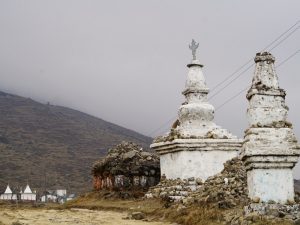 I had problems with secretion around my eyes for a while. I took the opportunity to consult Mick and Kris. They did not think I had a serious problem. To play safe, Kris gave me eye-drops and an anti-biotic cream. I thank St. Christopher – the saint of travellers who has been kind to me: I have met many nice and wonderful people on the road.
I had problems with secretion around my eyes for a while. I took the opportunity to consult Mick and Kris. They did not think I had a serious problem. To play safe, Kris gave me eye-drops and an anti-biotic cream. I thank St. Christopher – the saint of travellers who has been kind to me: I have met many nice and wonderful people on the road.
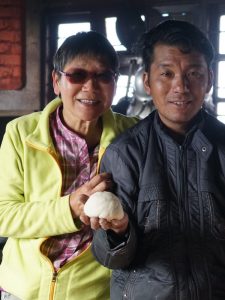
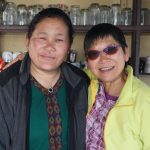 After another delicious curry chicken dinner, I went to bed early. Then lightning, thunder, hailstorm and torrential rain arrived without forewarning. I was happy as I might be able to watch a gorgeous sunrise.
After another delicious curry chicken dinner, I went to bed early. Then lightning, thunder, hailstorm and torrential rain arrived without forewarning. I was happy as I might be able to watch a gorgeous sunrise.
Day 3: Tumling – Tonglu – Dhotrey (7km) -by car to Darjeeling
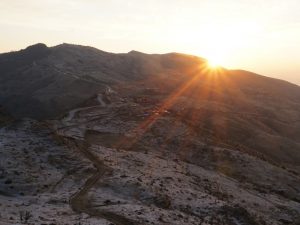 I was right: the sky was clear around 5am. My guide has his own secret spot to watch sunrise which is only a kilometre from the lodge. Anyway, from a hill top at 3,070m on a clear day, it is possible to Mt Everest and Kanchenjunga.
I was right: the sky was clear around 5am. My guide has his own secret spot to watch sunrise which is only a kilometre from the lodge. Anyway, from a hill top at 3,070m on a clear day, it is possible to Mt Everest and Kanchenjunga.
Well, I did see a magical pink Kanchenjunga (which is famously called the Sleeping Buddha) before the sunrise. But it was still not clear enough to see Mt. Everest. This means I have to return one day to see the Himalayan mountain ranges on a winter day with a crystal-clear sky.
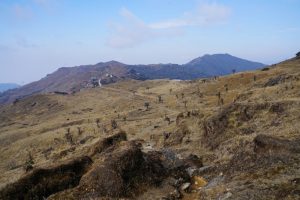
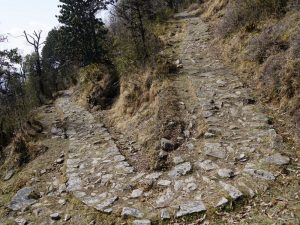 I said good-bye to my Nepalese host and set off at 8:15 am. First, I had to walk 2 km uphill to Tonglu (3,088m) on the Nepal side. Then it was steady downhill walk for 5 km through forest and bamboo groves to Dhotrey (2,542m).
I said good-bye to my Nepalese host and set off at 8:15 am. First, I had to walk 2 km uphill to Tonglu (3,088m) on the Nepal side. Then it was steady downhill walk for 5 km through forest and bamboo groves to Dhotrey (2,542m).
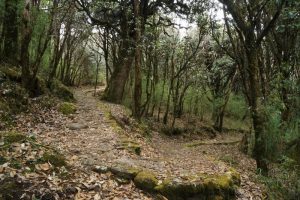
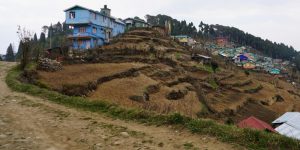 I arrived at this lovely and clean village shortly after 11 am. I guess I have walked about 35km altogether.
I arrived at this lovely and clean village shortly after 11 am. I guess I have walked about 35km altogether.
It suddenly became very misty. It took an hour to reach Maneybhanjyang where Andu, my guide got off. Then I was back in Darjeeling after 1 pm.
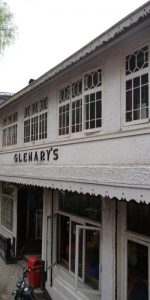 In the afternoon, I returned to Darjeeling in order to explore the Observatory Hill and the Mall. On my way to the Mall, I walked up the Nehru Road and decided to have tea and cake in the famed Glenary’s. I ran into Margaret who was born and studied here, and asked her about her thoughts on Darjeeling today. She said she was in tears on her first return to Darjeeling when she saw the degradation of the environment of this once pristine and famed hill station in the Victorian era.
In the afternoon, I returned to Darjeeling in order to explore the Observatory Hill and the Mall. On my way to the Mall, I walked up the Nehru Road and decided to have tea and cake in the famed Glenary’s. I ran into Margaret who was born and studied here, and asked her about her thoughts on Darjeeling today. She said she was in tears on her first return to Darjeeling when she saw the degradation of the environment of this once pristine and famed hill station in the Victorian era.
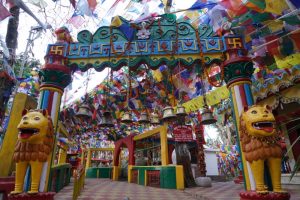 I visited the Mahakal Temple, a Hindu temple on the Observatory Hill with a sacred cave and a variety of prayer flags. I planned to go to the Windamere Hotel for a drink when I passed by its back gate after the temple visit. The guard did not let me in: guests must come through the front gate. At the end, I did not find its entrance!
I visited the Mahakal Temple, a Hindu temple on the Observatory Hill with a sacred cave and a variety of prayer flags. I planned to go to the Windamere Hotel for a drink when I passed by its back gate after the temple visit. The guard did not let me in: guests must come through the front gate. At the end, I did not find its entrance!
I continued my stroll around the Mall counter-clockwise. The walk is similar to the walk around the Victoria Peak in Hong Kong. Though there have been some developments in the Victoria Peak, the leafy path is still well-maintained. One enjoys the most beautiful and dramatic view of the harbour, Hong Kong Island, Kowloon and some of the outlying islands on this walk. But the Mall here is in very poor conditions and dirty. I did not see Kanchenjunga which was behind the mist.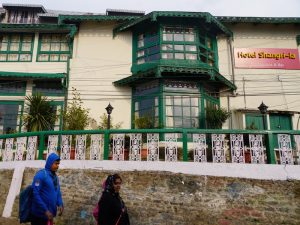
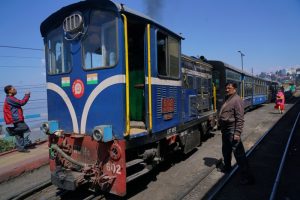 I ended my walk at Chowrasta, the historical square in the Victorian era hill station. I spent a while people watching, browsing at books in the Oxford Bookstore and looking at different types of Darjeeling tea. But the messy ongoing construction work ruins the place.
I ended my walk at Chowrasta, the historical square in the Victorian era hill station. I spent a while people watching, browsing at books in the Oxford Bookstore and looking at different types of Darjeeling tea. But the messy ongoing construction work ruins the place.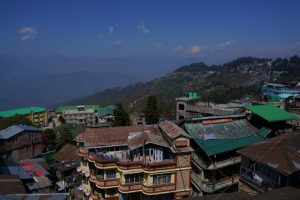
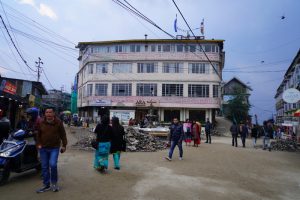 I was not in a tourist mood while in Darjeeling. I did not visit the few well-known temples including the Dhindham Temple modelled on the Pashupatinath Temple in Kathmandu and the Dali Temple. I have not taken the cable car nor watched sunrise from Tiger Hill. All in all, I am disappointed by the chaotic developments in Darjeeling.
I was not in a tourist mood while in Darjeeling. I did not visit the few well-known temples including the Dhindham Temple modelled on the Pashupatinath Temple in Kathmandu and the Dali Temple. I have not taken the cable car nor watched sunrise from Tiger Hill. All in all, I am disappointed by the chaotic developments in Darjeeling.



